Just exploring all things pagan and trying to add to my knowledge base.
Don't wanna be here? Send us removal request.
Text
Just my two cents on a gaming corporation trying to game the gamer. Tell me your thoughts plus snag a free subscription while you're there.
2 notes
·
View notes
Photo

A Gallery of Norse Gods & Yule Traditions
The Norse tradition of celebrating Yule (Yuletide=Yule Time) influenced many of the later traditions now associated with Christmas. “Yuletide” appears in Christmas carols, is often used interchangeably with “Christmas”, and many still celebrate the holiday with a yule log. The Christmas tree also owes something to Norse traditions as it represented Yggdrasil, the World Tree.
Yule was a New Year’s festival celebrating the end of the darkness of winter and the return of the sun. It was also a time to reflect upon the past, future, what one had done during the year that was now ending, and what one resolved to do better in the days ahead. The evergreen tree symbolized the World Tree, and so the life force, and the hope of renewal and rebirth, as did the bonfire which came to be known as the Yule fire and then Yule log. A part of the Yule log was always saved to start next year’s fire, symbolizing the cyclical nature of life and continuity.
Odin, the king of the gods, was known as the All-Father or “Father of All” and was thought to ride through the sky during Yuletide on his eight-legged horse, Sleipnir, distributing gifts to the deserving. Odin, with his flowing beard, influenced the development of the modern image of Santa Claus. One of the best-known works related to the Christmas season, A Christmas Carol by Charles Dickens (published on 19 December 1843), also owes much to Norse tradition as it was believed ghosts were especially active during Yuletide and might bring harm – or messages from the afterlife that could improve one’s character.
A famous example of this is the medieval belief in the wild hunt, a parade of spirits, sometimes led by Odin, which reminded those who witnessed it of the brevity of life and what awaited them after death, giving the person the opportunity to change their ways, live a better life, and avoid becoming an unwilling participant in the hunt. The traditional British Christmas meal featuring roast beef developed from the roast boar of Yule (now largely replaced by turkey), although Christmas cake and Christmas pudding are thoroughly English.
As Christianity became more widespread throughout Scandinavia, the old traditions became fused with the new religion, influencing many of the other traditions long associated with Christmas today, including gift-giving and celebration through song.
The following gallery presents various images of the Norse deities and the traditions, which were practiced long ago by their adherents and, in some cases, continue to be today.
Continue reading…
42 notes
·
View notes
Text

The Past (Thomas Cole, 1838)
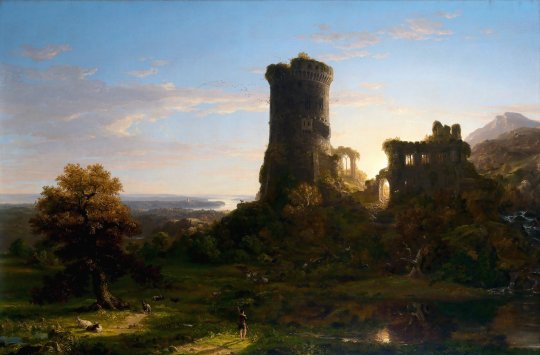
The Present (Thomas Cole, 1838)
9K notes
·
View notes
Text
20K notes
·
View notes
Text
Just a place to get the noise out of my head. Give me a follow and look behind the curtain of my mind.
3 notes
·
View notes
Photo

Prehistoric Isles of Scilly
The Isles of Scilly are a small island group west of Cornwall. Despite their small size, they abound in prehistoric sites dating from the Stone Age to the Bronze Age, including cairns, burial chambers and passage graves. While prehistoric sites are found on all islands, this image gallery focuses on the two larger islands St. Mary’s and St. Agnes.
While the islands are remote today, they were once directly connected by a land bridge with Cornwall, a land called “Lyonesse” in traditional legends and folklore. About 18,000 years ago, at the height of the last glacial period, the sea level was about 100 metres (328 feet) below its current level, which meant that not only were all of the Scillonian islands connected, but they represented a hilly patch towards the western end of Lyonesse.
It is in these directly connected lands that people lived and built the prehistoric monuments that we can visit today. There are likely many more found below sea level. As the ice melted, sea levels rose slowly but noticeably in a human lifetime. About 10,000 years ago, sea levels were still 30 metres (98 feet) below current levels, and around 6,000 years ago they were about 5 metres (16 feet) lower than today.
Local legends say that on what is now the Seven Stones Reef (about 1/3 of the way to Cornwall) stood a great city, the City of Lions, with a turreted castle and no less than 140 churches. As the sea swallowed the city, only one man and his horse survived, and the Vyvyan family of Cornwall claims to be descended from this man.
The Isles of Scilly are a fantastic destination for lovers of prehistory, with stunning nature and friendly people to welcome travellers.
Continue reading…
113 notes
·
View notes
Text
From the Han Dynasty to the Achaemenids, ancient Asia was home to many successful monarchies. These rulers shaped the region’s cultures and traditions for countless generations.
12 notes
·
View notes
Text
youtube
An unbelievable video about Vikings, the Fearsome Legendary Norse Warriors. These fierce warriors had advanced skills in shipbuilding and navigation, allowing them to traverse vast oceans with their iconic longships in search of new lands to conquer.
173 notes
·
View notes
Photo

Dunnottar Castle, Stonehaven, Aberdeenshire, Scotland
29K notes
·
View notes
Text
Where is the tomb of Alexander the Great, one of the most successful rulers and military strategists of all time? He was only 33-years-old in Babylon in 323 BC.
13 notes
·
View notes
Photo





Borgund Stave Church
Located in Borgund, Norway Built between 1180 and 1250 AD
3K notes
·
View notes
Text
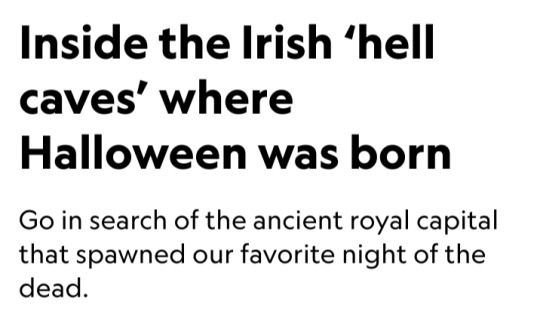
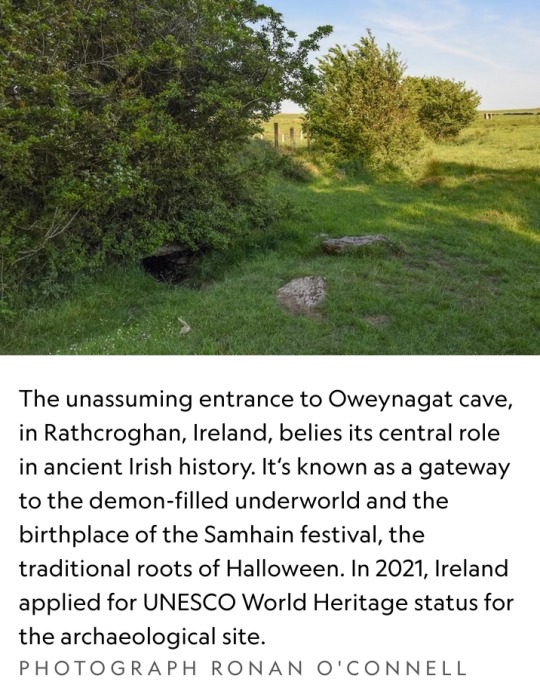
Story and photographs by Ronan O’Connell
September 26, 2023
In the middle of a field in a lesser known part of Ireland is a large mound where sheep wander and graze freely.
Had they been in that same location centuries ago, these animals might have been stiff with terror, held aloft by chanting, costumed celebrants while being sacrificed to demonic spirits that were said to inhabit nearby Oweynagat cave.
This monumental mound lay at the heart of Rathcroghan, the hub of the ancient Irish kingdom of Connaught.
The former Iron Age center is now largely buried beneath the farmland of County Roscommon.
In 2021, Ireland applied for UNESCO World Heritage status for Rathcroghan (Rath-craw-hin). It remains on the organization's tentative list.

Rooted in lore
Spread across more than two square miles of rich agricultural land, Rathcroghan encompasses 240 archaeological sites, dating back 5,500 years.
They include burial mounds, ring forts (settlement sites), standing stones, linear earthworks, an Iron Age ritual sanctuary — and Oweynagat, the so-called gate to hell.
More than 2,000 years ago, when Ireland’s communities seem to have worshipped nature and the land itself, it was here at Rathcroghan that the Irish New Year festival of Samhain (SOW-in) was born, says archaeologist and Rathcroghan expert Daniel Curley.
In the 1800s, the Samhain tradition was brought by Irish immigrants to the United States, where it morphed into the sugar overload that is American Halloween.
Dorothy Ann Bray, a retired associate professor at McGill University and an expert in Irish folklore, explains that pre-Christian Irish divided each year into summer and winter.
Within that framework were four festivities.
Imbolc, on February 1, was a festival that coincided with lambing season.
Bealtaine, on May 1, marked the end of winter and involved customs like washing one’s face in dew, plucking the first blooming flowers, and dancing around a decorated tree.
August 1 heralded Lughnasadh, a harvest festival dedicated to the god Lugh and presided over by Irish kings.
Then on October 31 came Samhain, when one pastoral year ended and another began.
Rathcroghan was not a town, as Connaught had no proper urban centers and consisted of scattered rural properties.
Instead, it was a royal settlement and a key venue for these festivals.
During Samhain, in particular, Rathcroghan was a hive of activity focused on its elevated temple, which was surrounded by burial grounds for the Connachta elite.
Those same privileged people may have lived at Rathcroghan. The remaining lower-class Connachta communities resided in dispersed farms and descended on the site only for festivals.
At those lively events they traded, feasted, exchanged gifts, played games, arranged marriages, and announced declarations of war or peace.
Festivalgoers also may have made ritual offerings, possibly directed to the spirits of Ireland’s otherworld.
That murky, subterranean dimension, also known as Tír na nÓg (Teer-na-nohg), was inhabited by Ireland’s immortals, as well as a myriad of beasts, demons, and monsters.
During Samhain, some of these creatures escaped via Oweynagat cave (pronounced “Oen-na-gat” and meaning “cave of the cats”).
“Samhain was when the invisible wall between the living world and the otherworld disappeared,” says Mike McCarthy, a Rathcroghan tour guide and researcher who has co-authored several publications on the site.
“A whole host of fearsome otherworldly beasts emerged to ravage the surrounding landscape and make it ready for winter.”
Thankful for the agricultural efforts of these spirits but wary of falling victim to their fury, the people protected themselves from physical harm by lighting ritual fires on hilltops and in fields.
They disguised themselves as fellow ghouls, McCarthy says, so as not to be dragged into the otherworld via the cave.
Despite these engaging legends — and the extensive archaeological site in which they dwell — one easily could drive past Rathcroghan and spot nothing but paddocks.
Inhabited for more than 10,000 years, Ireland is so dense with historical remains that many are either largely or entirely unnoticed.
Some are hidden beneath the ground, having been abandoned centuries ago and then slowly consumed by nature.
That includes Rathcroghan, which some experts say may be Europe’s largest unexcavated royal complex.
Not only has it never been dug up, but it also predates Ireland’s written history.
That means scientists must piece together its tale using non-invasive technology and artifacts found in its vicinity.
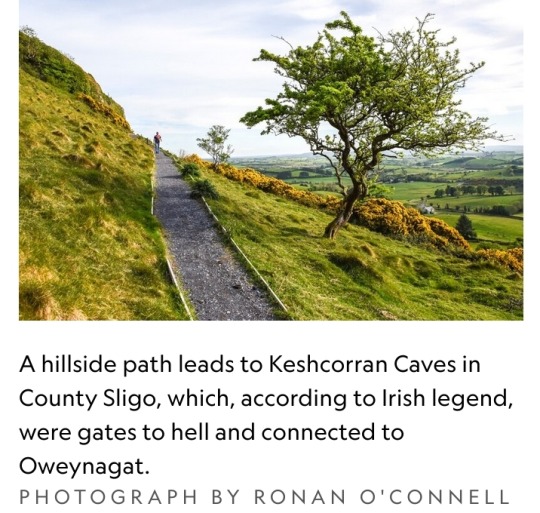
While Irish people for centuries knew this site was home to Rathcroghan, it wasn’t until the 1990s that a team of Irish researchers used remote sensing technology to reveal its archaeological secrets beneath the ground.
“The beauty of the approach to date at Rathcroghan is that so much has been uncovered without the destruction that comes with excavating upstanding earthwork monuments,” Curley says.
“[Now] targeted excavation can be engaged with, which will answer our research questions while limiting the damage inherent with excavation.”
Becoming a UNESCO site
This policy of preserving Rathcroghan’s integrity and authenticity extends to tourism.
Despite its significance, Rathcroghan is one of Ireland’s less frequented attractions, drawing some 22,000 visitors a year compared with more than a million at the Cliffs of Moher.
That may not be the case had it long ago been heavily marketed as the “Birthplace of Halloween,” Curley says.
But there is no Halloween signage at Rathcroghan or in Tulsk, the nearest town.
Rathcroghan’s renown should soar, however, if Ireland is successful in its push to make it a UNESCO World Heritage site.
The Irish Government has included Rathcroghan as part of the “Royal Sites of Ireland,” which is on its newest list of locations to be considered for prized World Heritage status.
The global exposure potentially offered by UNESCO branding would likely attract many more visitors to Rathcroghan.
But it seems unlikely this historic jewel will be re-packaged as a kitschy Halloween tourist attraction.
“If Rathcroghan got a UNESCO listing and that attracted more attention here that would be great, because it might result in more funding to look after the site,” Curley says.
“But we want sustainable tourism, not a rush of gimmicky Halloween tourism.”
Those travelers who do seek out Rathcroghan might have trouble finding Oweynagat cave.
Oweynagat is elusive — despite being the birthplace of Medb, perhaps the most famous queen in Irish history, 2,000 years ago.
Barely signposted, it’s hidden beneath trees in a paddock at the end of a one-way, dead-end farm track, about a thousand yards south of the much more accessible temple mound.
Visitors are free to hop a fence, walk through a field, and peer into the narrow passage of Oweynagat.
In Ireland’s Iron Age, such behavior would have been enormously risky during Samhain, when even wearing a ghastly disguise might not have spared the wrath of a malevolent creature.
Two millennia later, most costumed trick-or-treaters on Halloween won’t realize they’re mimicking a prehistoric tradition — one with much higher stakes than the pursuit of candy.
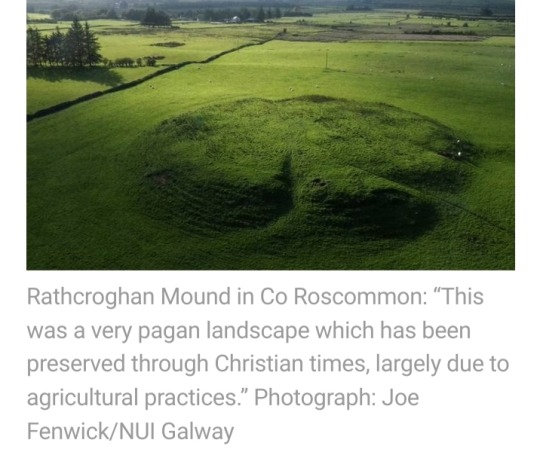
110 notes
·
View notes
Text
Blackcrowing's Master Reading List

I have created a dropbox with pdfs I have gathered over the years, I have done my best to only allow access to documents which I found openly available through sites like JSTOR, Archive.org, or other educational resources with papers available for download.
That being said I ALSO recommend (I obviously have not read all of these but they are either in my library or I intend to add them)
📚 Celtic/Irish Pagan Books
The Morrighan: Meeting the Great Queens, Morgan Daimler
Raven Goddess: Going Deeper with the Morríghan, Morgan Daimler
A Circle of Stones: Journeys and Meditations for Modern Celts, Erynn Rowan Laurie
Ogam: Weaving Word Wisdom, Erynn Rowan Laurie
Ireland's Animals: Myths, Legends and Folklore, Niall Mac Coitir
Celtic Cosmology and the Otherworld: Myths, Orgins, Sovereignty and Liminality, Sharon Paice MacLeod
Celtic Myth and Religion, Sharon Paice MacLeod
A Guide to Ogam Divination, Marissa Hegarty
The Book of the Great Queen, Morpheus Ravenna
Litany of The Morrígna, Morpheus Ravenna
Celtic Visions, Caitlín Matthews
Harp, Club & Calderon, Edited by Lora O'Brien and Morpheus Ravenna
Celtic Cosmology: Perspectives from Ireland and Scotland, Edited by Jacqueline Borsje and others
Polytheistic Monasticism: Voices from Pagan Cloisters, Edited by Janet Munin
📚 Celtic/Irish Academic Books
Early Medieval Ireland 400-1200, Dáibhí Ó Cróinín
The Sacred Isle, Dáithi Ó hÓgáin
The Ancient Celts, Berry Cunliffe
The Celtic World, Berry Cunliffe
Irish Kingship and Seccession, Bart Jaski
Early Irish Farming, Fergus Kelly
Studies in Irish Mythology, Grigory Bondarnko
Prehistoric Archaeology of Ireland, John Waddell
Archeology and Celtic Myth, John Waddell
Understanding the Celtic Religion: Revisiting the Past, Edited by Katja Ritari and Alexandria Bergholm
A Guide to Ogam, Damian McManus
Cesar's Druids: an Ancient Priesthood, Miranda Aldhouse Green
Animals in Celtic Life and Myth, Miranda Aldhouse Green
The Gods of the Celts, Miranda Green
The Celtic World, Edited by Miranda J Green
Myth and History in Celtic and Scandinavian Tradition, Edited by Emily Lyle
Ancient Irish Tales, Edited by Tom P Cross and Clark Haris Slover
Cattle Lords and Clansmen, Nerys Patterson
Celtic Heritage, Alwyn and Brinley Rees
Ireland's Immortals, Mark Williams
The Origins of the Irish, J. P. Mallory
In Search of the Irish Dreamtime, J. P. Mallory
The Táin, Thomas Kinsella translation
The Sutton Hoo Sceptre and the Roots of Celtic Kingship Theory, Michael J. Enright
Celtic Warfare, Giola Canestrelli
Pagan Celtic Ireland, Barry Raftery
The Year in Ireland, Kevin Danaher
Irish Customs and Beliefs, Kevin Danaher
Cult of the Sacred Center, Proinsais Mac Cana
Mythical Ireland: New Light on the Ancient Past, Anthony Murphy
Early Medieval Ireland AD 400-1100, Aidan O'Sullivan and others
The Festival of Lughnasa, Máire MacNeill
Curse of Ireland, Cecily Gillgan
📚 Indo-European Books (Mostly Academic and linguistic)
Dictionary of Indo-European Concepts and Society, Emily Benveniste
A Dictionary of Selected Synonyms in the Principle Indo-European Languages, Carl Darling Buck
The Horse, the Wheel and Language, David W. Anthony
Comparative Indo-European Linguistics, Robert S.P. Beekes
In Search of the Indo-Europeans, J.P. Mallory
Indo-European Mythology and Religion, Alexander Jacob
Some of these books had low print runs and therefore can be difficult to find and very expensive... SOME of those books can be found online with the help of friends... 🏴☠️
library genesis might be a great place to start... hint hint...
134 notes
·
View notes
Text
Fascinating read about Camilla from The Aeneid and historical female warriors.
18 notes
·
View notes



